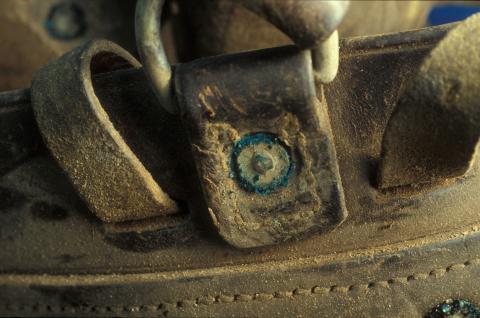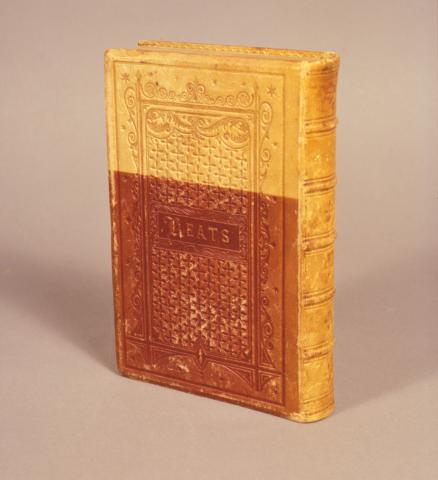Deterioration
As mentioned in the introduction, leather is composed of tanned collagen, moisture, oils and fat. The amino acids that link to form collagen molecules give leather its slightly acidic nature, with a pH range between 3 and 6. The water and fat contents in leather should range between 12 - 20 % and 2 - 10 % respectively. Within these limits equilibrium and leather condition is maintained; outside them, deterioration accelerates. If there is too much fat in the leather for instance, water is repelled, resulting in the leather eventually becoming hard, brittle and inflexible. Once this occurs, it is often difficult to return the leather to its original condition.
Leather is affected adversely by a range of environmental and biological agents, careless handling and poor storage and display techniques. Chemical changes may take place in the tanning agents and other materials used in the manufacturing processes as well as in the collagen molecules. A comprehensive review of leather deterioration mechanisms is provided elsewhere (Kite and Thomson 2006). Some of these deterioration agents and processes include:
- attack by moulds, bacteria, rats, termites and many kinds of insects. A combination of excessive lubrication with oils and fats and high relative humidity (above 70 %) provides the right conditions for mould to develop on leather;
- drying out and the development of hard, brittle and cracked leather due to excessive lubrication and/or, low relative humidity (below 40 %) and/or moderate heat and relative humidity fluctuations;
- corrosion of metals in contact with fatty materials incorporated in leather dressings. For example, a turquoise, waxy substance often forms on copper fastenings attached to leather (Figure 3);
- attack on collagen molecules is catalysed by metal ions, copper (II), iron and cobalt ions in particular, and may lead to the breakdown of leather. These metals may have been incorporated in the leather from water and other materials used in tanning, from dyes, by direct contact with metals as a result of manufacturing processes or contact with metals in archaeological deposits;
- the effects of light, which include attack on the polymeric collagen components themselves, fading of dyes incorporated in leather (Figure 4) and interaction with atmospheric compounds to form harmful substances such as sulphur trioxide. Skin products that still have hair attached are susceptible to both insect attack and light-induced damage that may result in substantial hair loss;
- physical damage by too frequent or too vigorous cleaning, rough handling or storage of leather objects in conditions under which stresses and strains are induced in the object;
- the development of ‘red rot’ in vegetable tanned leather objects. Certain items of harness, military equipment, book bindings and upholstery are susceptible to this type of decay that is caused by atmospheric pollutants; and
- chemical and mechanical damage caused by dust. The sharp edges of minute dust and dirt particles are abrasive and can cause fibre damage if removed by methods other than suction. Dust also acts as a nucleation centre, attracting fungal spores and acting as a centre for condensation and subsequent chemical attack.
Figure 3: Corrosion of copper alloy studs due to excess fat in the leather. Turquoise waxy material is evidence of copper corrosion.
Figure 4: Leather bound book of Keats’ poems showing fading due to light exposure.














